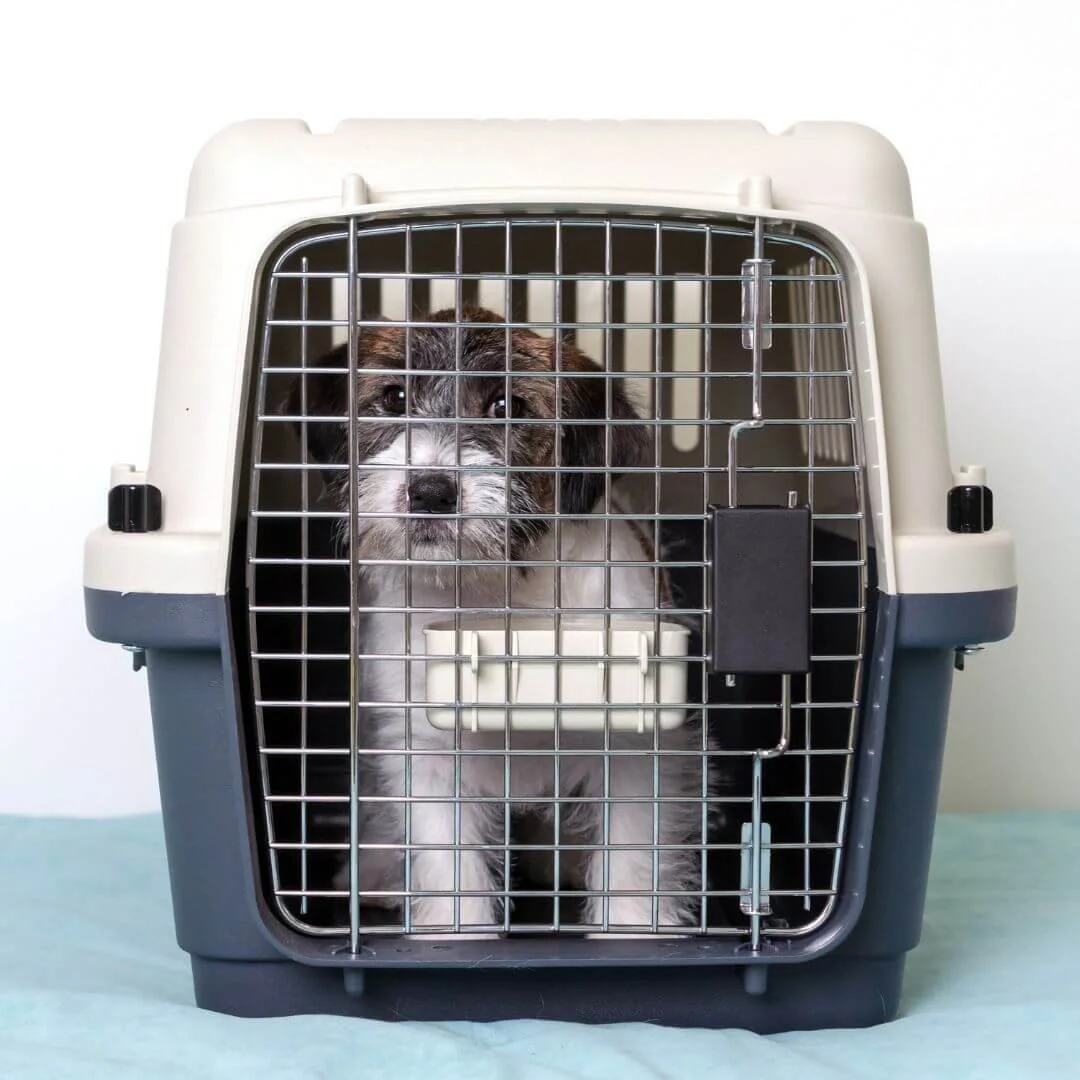Successfully Crate Train Your New Puppy
January 4, 2025
Are you struggling to crate train your new puppy? Do they seem anxious when confined to the crate? Or maybe you’re unsure where to even start? Don’t worry—you’re not alone.
Below, we’ll guide you through everything you need to know, from the benefits of crate training to practical steps and pro tips to help your puppy see their crate as a safe and happy space.
Why Crate Training Your Puppy is Life Skill
While a crate might seem restrictive at first, crate training comes with numerous benefits, both for you and your puppy. Here’s 7 reasons why it’s worth the effort to crate train your puppy:
Accelerates Potty Training: Puppies will avoid soiling the area where they sleep so a crate is a great tool to help with potty training, encouraging them to hold it.
Protects Your Puppy: A crate restricts your puppy from things and places they shouldn’t have access to --- sneakers, furniture, etc.
Doggie Daycare: Most doggie daycares use crates as part of their strategy so that puppies can get so much needed rest in between play sessions.
Medical Reasons: The animal hospital will utilize a crate pre/post op. when your puppy requires a surgical medical procedure, like spay or neuter.
Travel: In the car, a crate is the safest place for your puppy. On board an aircraft, typically, the crate or carrier is the only place your puppy will be permitted.
Emergency Events: During natural disasters shelters open to pets are often limited to those that can housed in a crate or carrier.
Safe Space: The crates provide a calm retreat away from busy household activity and children.
How to Pick the Perfect Crate
Now that you are sold on crate training, it’s time determine which crate best fits your puppy’s needs and your budget. Look for a crate which is large enough for them to stand, turn around, and lay down comfortably.
Below are the three main types of crates to choose from:
This Pet Safe plastic crates is must-have to fly across the country or overseas.
Soft Sided Crates: Portable and fold up easily soft-sided crate are simple to transfer and store. These crates are not recommended until your puppy has matured.
Wire Crates: Strong and when not in use wire crates can be folded flat for storage.
Equipped with a divider which is helpful for growing puppies.
Crate covers available to improve appearance and privacy
Plastic Crates Sturdy, plastic crates are the most expensive of this group; however, if you are planning on having more than just 1 pup then consider it an investment.
If a crate isn't the right piece of equipment for you puppy, don't worry - there is another option. A xpen (dog playpen) can similarly confine your puppy, just like a crate. Many of my clients find that using the crate at night and the xpen during the day works well for them.
Training Your New Puppy to be Comfortable with the Crate
Success with the crate starts with a positive first impression.
Step 1: Play Crate Games
Begin to build a positive association with the crate by tossing tasty treats inside as an incentive for your puppy to move into the space. They may be hesitant to move all the way in, so, be patient and don’t push them or rush to close the door. Once your puppy is comfortable with moving all the way inside of their crate, closing the door briefly and reward them through the door. Release the puppy from the crate and repeat this step many times.
Step 2: Leave Your Puppy Alone for Short Periods
Place a special high value treat like a Toppl stuffed with peanut butter inside your puppy’s crate. Close the crate door and leave the room for 30 seconds. Return calmly and take the treat away without making a big fuss. Repeat this process, gradually increasing the time you’re out of sight—45 seconds, then 2 minutes, then 7 minutes, etc.
Step 3: Leave Your Puppy Alone for Extended Periods
Now it’s time to prepare your puppy for longer absences. Start by leaving them for short errands, like checking the mail or watering the plants. Gradually stretch this time out to an hour or more.
New Puppy Crate Training Pro Tips
Sleepy Frenchie puppy has chosen to relax inside their comfy crate.
Create a Haven They’ll Love- Your puppy’s crate should be a place they want to seek out for rest and relaxation. Add soft bedding, some toys and have designated crate-only treat reserved. If you are teaching the puppy to potty train outside, opt to include a reusable pee pad, rather than a blanket.
Normalize Alone Time: Prepare your puppy for alone time by practicing when you are home. Simply place pet inside the crate while you are tending to household chores. It is essential that your puppy learns to be alone and entertain themselves or they run the risk of developing separation anxiety.
Use Appropriately: A crate should be a safe and positive space for your puppy. Avoid overuse to maintain trust and comfort.
Make Crate Training a Positive Experience
Crate training is a lifelong skill with countless benefits for your puppy while simplifying life for you. With patience and the right approach, your puppy can learn to love their crate, viewing it as a haven of safety and peace.
✌🏽❤️🐶
Like this article? Check these useful resources out 👇🏼
📰 How to Hire the Best Dog Trainer for Your Pet
🐶 Puppy Training: Book Your Initial Consult



